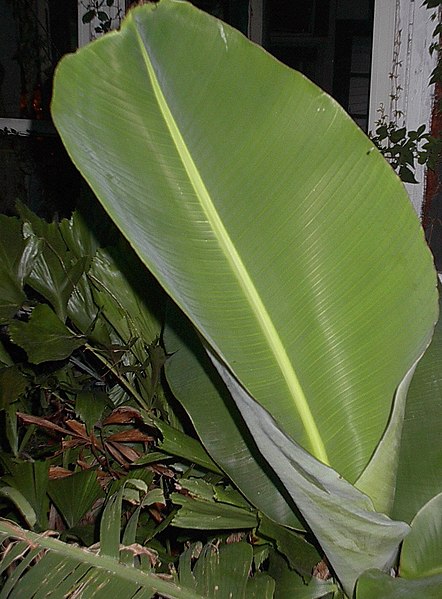The banana leaf is the leaf of the banana plant, which may produce up to 40 leaves in a growing cycle. The leaves have a wide range of applications because they are large, flexible, waterproof and decorative. They are used for cooking, wrapping, and food-serving in a wide range of cuisines in tropical and subtropical areas. They are used for decorative and symbolic purposes in numerous Hindu and Buddhist ceremonies. In traditional homebuilding in tropical areas, roofs and fences are made with dry banana-leaf thatch. Bananas and palm leaves were historically the primary writing surfaces in many nations of South and Southeast Asia.
Banana leaf
Carp pepes, carp fish cooked with spices in a banana leaf.
Making of banana leaf plates which replace plastic as a waste solution
Steamed rice wrapped inside banana leaf to enhance its aroma and aesthetic
Pepes is an Indonesian cooking method using banana leaves as food wrappings. The banana-leaf package containing food is secured with lidi seumat and then steamed or grilled on charcoal. This cooking technique allows the rich spice mixture to be compressed against the main ingredients inside the individual banana-leaf package while being cooked and also adds a distinct aroma of cooked or burned banana leaves. Although being cooked simultaneously with food, the banana leaf is a non-edible material and is discarded after consuming the food.
Carp fish pepes
Brengkes tempoyak iwak lais served in a traditional restaurant in Palembang. Brengkes is Palembang Malay term for pepes.
Palai bada, a Minang version of fish pepes
Minced beef pepes







